Australia’s unemployment rate is currently 4.1%, a historically low figure.
The low unemployment rate has been driven by the boom in non-market (government-funded) roles, such as those related to the NDIS.
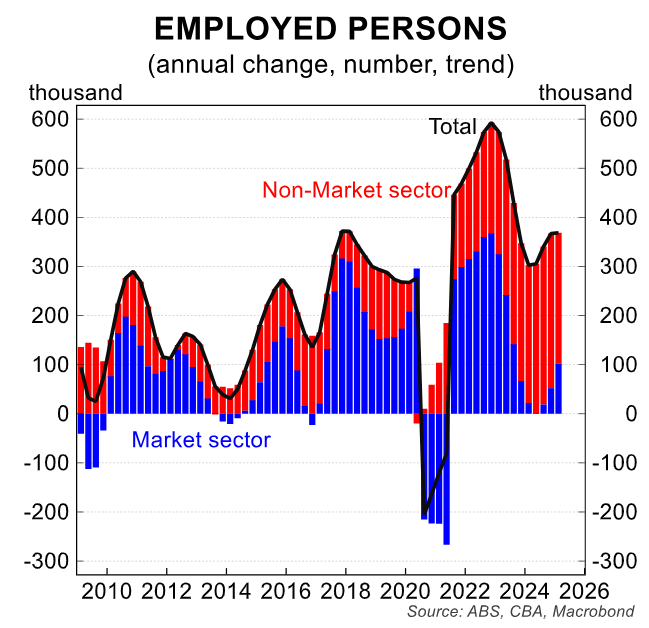
The latest batch of data suggests that job growth has stalled, portending rising unemployment.
As illustrated below by Justin Fabo from Antipodean Macro, last week’s NAB business survey showed that reported hiring declined in May to be below average levels:
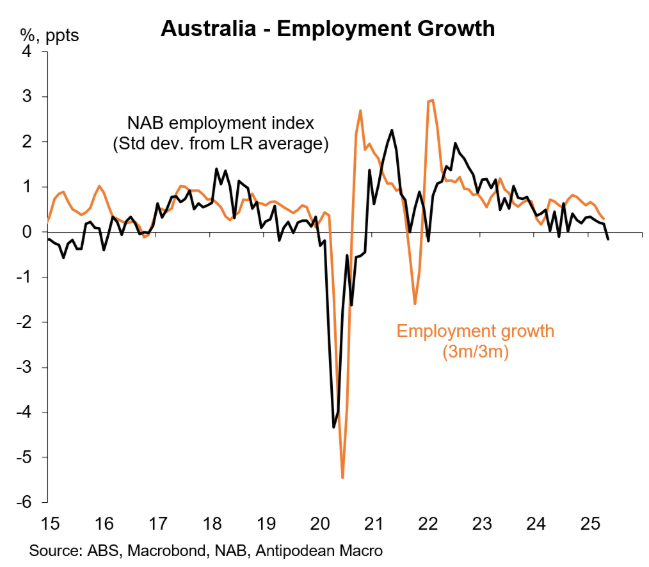
Capacity utilisation has also fallen, which historically corresponds to rising unemployment:
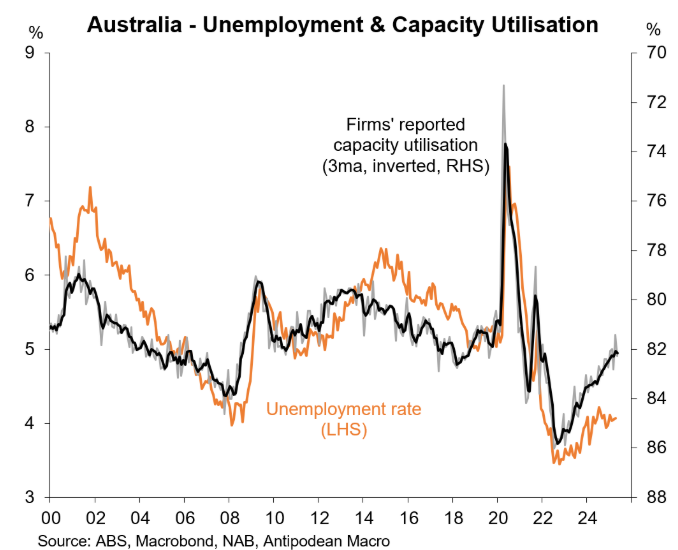
The May unemployment survey from Roy Morgan shows that Australia’s unemployment rate has surged higher, putting it at odds with the official ABS measure.
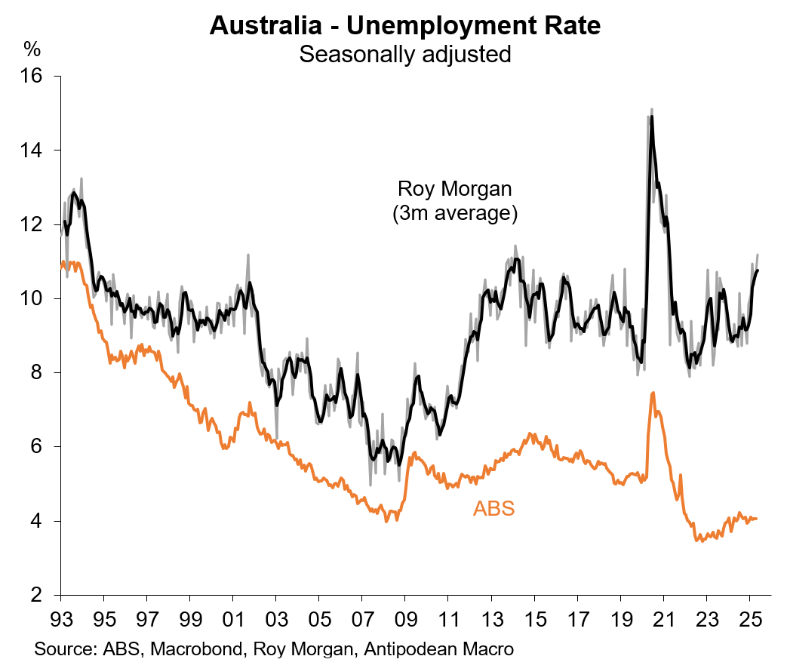
The latest employment survey for May from SEEK reports that the number of job advertisements fell by 0.3% over the month and by 5.6% over the year.
The number of applications per job ad also rose by 1.2% over the month to a new high.
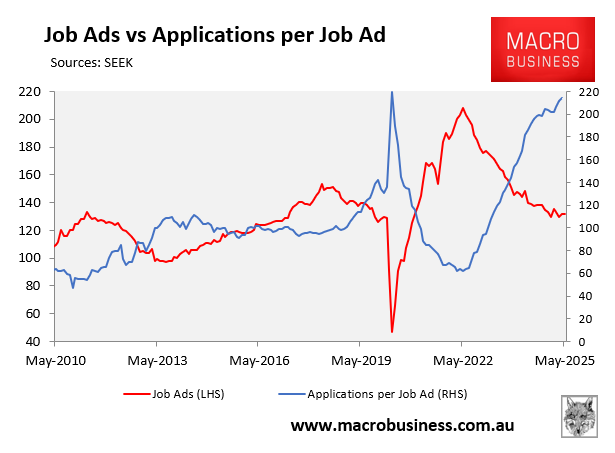
The following chart plots SEEK’s job ad survey against the unemployment rate and suggests that unemployment will rise (albeit it has suggested this for a long time).
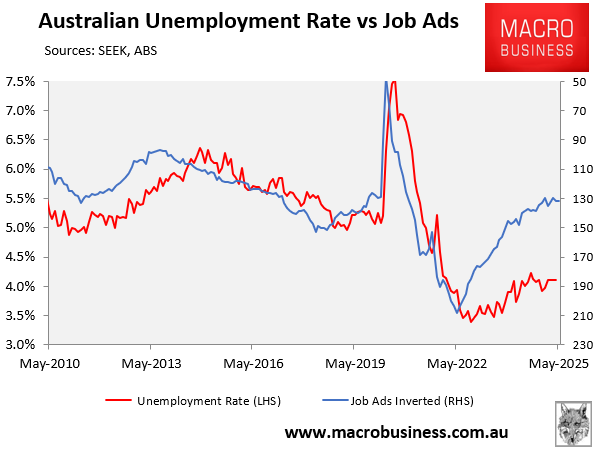
SEEK’s advertised salaries index also continues to track sideways, growing by 0.2% over the month, 0.9% over the quarter, and by 3.6% annually:
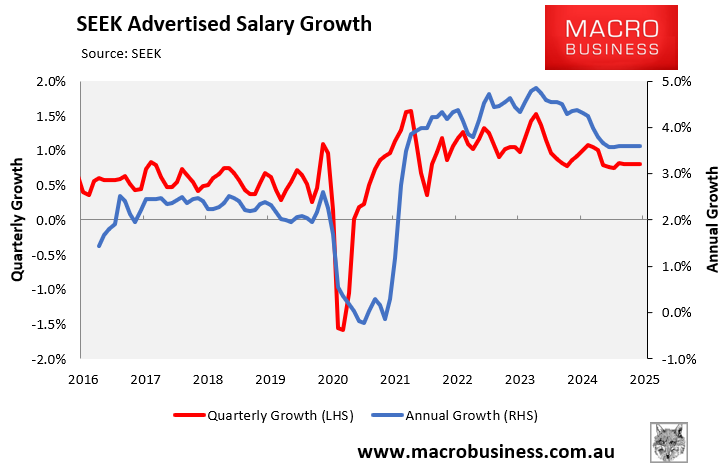
Jobs & Skills Australia (JSA) also released its internet vacancies index (IVI) report for May, which recorded a 2.8% decline in job advertisements over the month and a 12.7% decline year on year.
The following chart plots JSA’s IVI against SEEK’s job advertisements index:
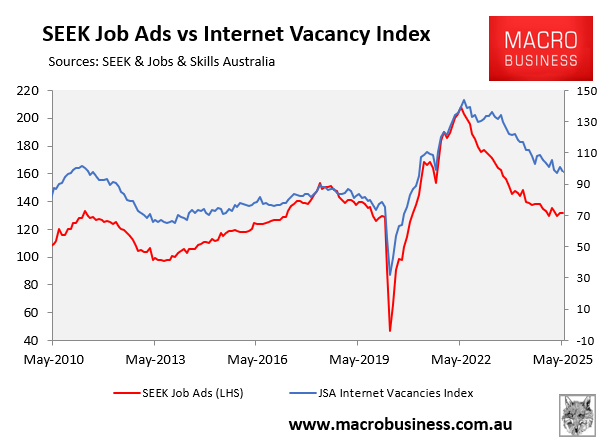
Like SEEK’s index, JSA’s IVI is pointing to rising unemployment in the months ahead:
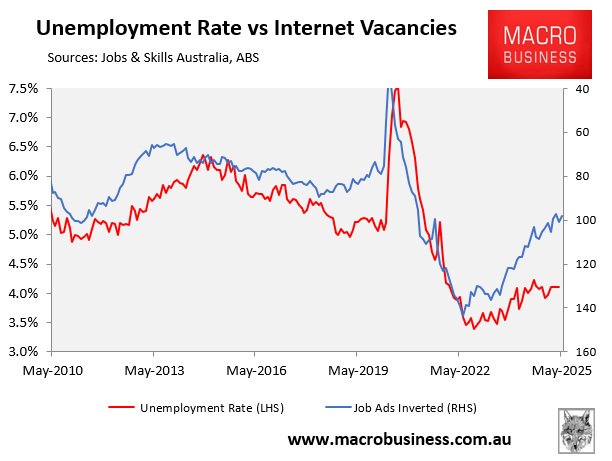
JSA also shows that Australia is oversupplied with low-skilled workers:
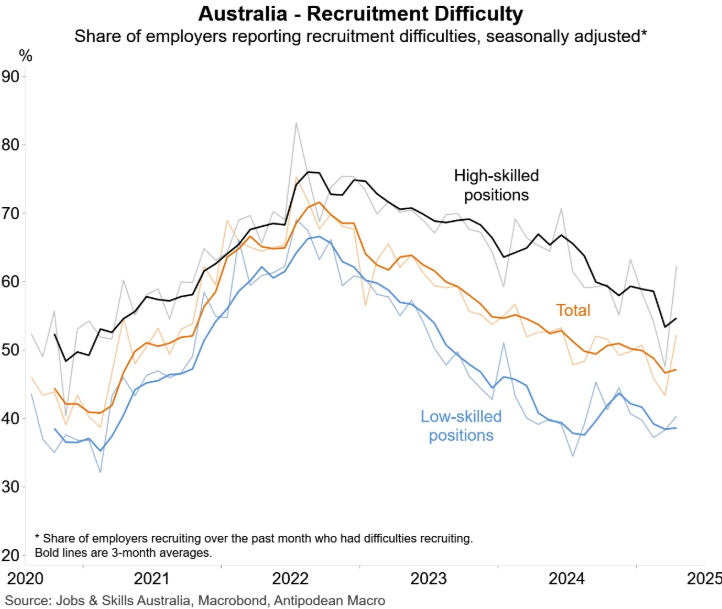
Finally, independent economist Tarric Brooker has created the following chart tracking filled jobs versus the growth in the working-age population.
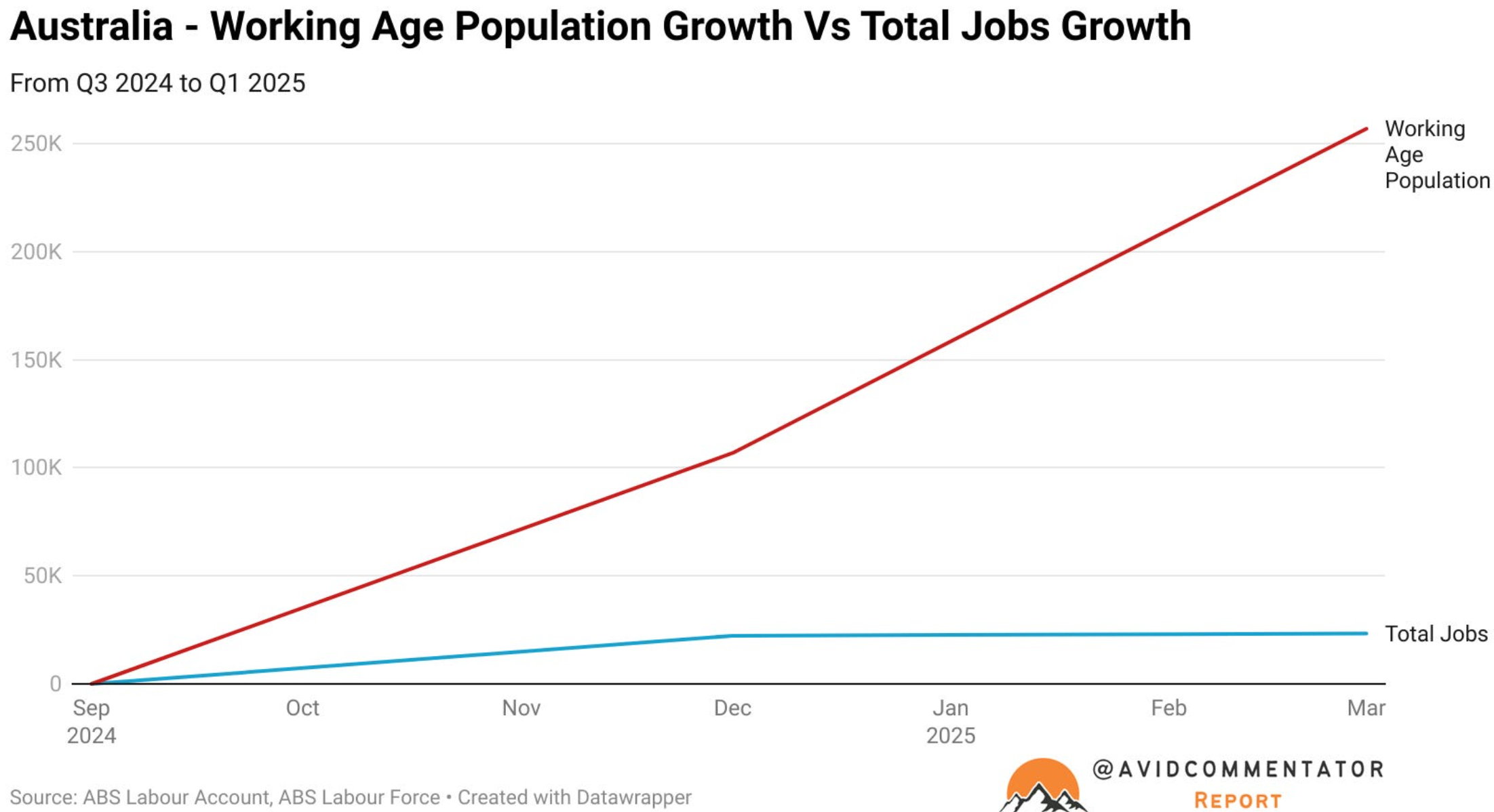
“In the last six months, the Aussie economy has added 23,400 jobs while the working age population has grown by 256,800”, noted Brooker on Twitter (X).
Brooker’s analysis is based on the ABS quarterly labour account, which counts total jobs, not employed people.
“So far the job losses have been contained in net terms to people’s second jobs”, noted Brooker.
The official May Labour Force release will be published on Thursday at 11.30am. Most analysts expect the unemployment rate to remain at 4.1%.
Even if these forecasts come to fruition, the data above suggest that the labour market has weakened materially, especially in the private sector economy.

